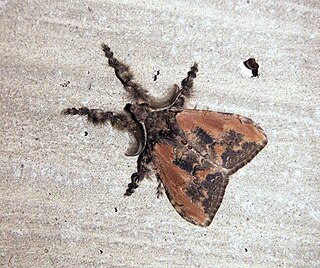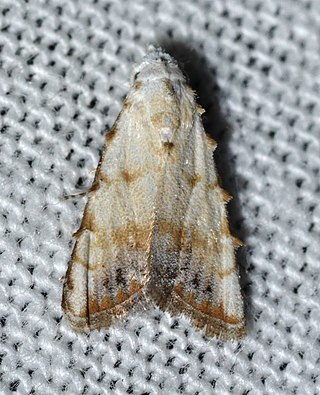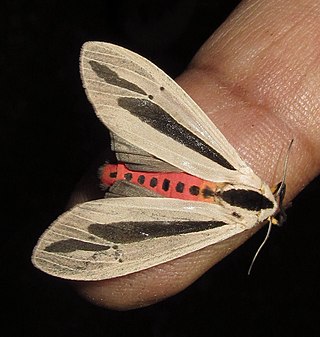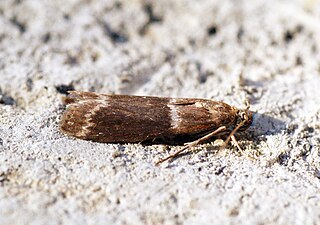
Sorghum or broomcorn is a genus of about 25 species of flowering plants in the grass family (Poaceae). Some of these species are grown as cereals for human consumption, in pastures for animals as fodder, and as bristles for brooms. Sorghum grain is a nutritious food rich in protein, dietary fiber, B vitamins, and minerals.

Sorghum bicolor, commonly called sorghum and also known as great millet, broomcorn, guinea corn, durra, imphee, jowar, or milo, is a grass species cultivated for its grain, which is used for food for humans, animal feed, and ethanol production. Sorghum originated in Africa, and is now cultivated widely in tropical and subtropical regions. Sorghum is the world's fifth-most important cereal crop after rice, wheat, maize, and barley, with 61,000,000 metric tons of annual global production in 2021. S. bicolor is typically an annual, but some cultivars are perennial. It grows in clumps that may reach over 4 metres (13 ft) high. The grain is small, ranging from 2 to 4 millimetres in diameter. Sweet sorghums are sorghum cultivars that are primarily grown for forage, syrup production, and ethanol; they are taller than those grown for grain.

Olene mendosa, the brown tussock moth or hairy tussock moth, is a moth of the family Erebidae. The species was first described by Jacob Hübner in 1823. It is found in India, Bangladesh, Sri Lanka, Indonesia, Taiwan, Thailand and Australia.

Cryptoblabes gnidiella, the honeydew moth or Christmasberry moth, is a moth of the family Pyralidae. It is natively found around the Mediterranean Sea but occurs also in Africa, the Oriental & Australasian region and is an introduced species in South America and Middle America.

Nola cereella, the sorghum webworm, is a moth of the family Nolidae. It is kin to the Noctuidae, also called Tuft moth due to the presence of its tufted scales. The species was first described by Louis Augustin Guillaume Bosc in 1800. It is found in the southeastern parts of the United States, from Texas to Florida, and north to New York. From North America its range extends southward through Puerto Rico and Suriname down to Argentina.

Herpetogramma licarsisalis, commonly known as the grass webworm or pale sod-webworm, is a species of moth in the family Crambidae.

Creatonotos gangis, the Baphomet moth or Australian horror moth, is a species of arctiine moth in South East Asia and Australia. It was described by Carl Linnaeus in his 1763 Centuria Insectorum.

Cryptoblabes is a genus of small moths belonging to the snout moth family (Pyralidae). They are the type genus of the Cryptoblabini tribe of the huge snout moth subfamily Phycitinae. At least one representative of this genus nowadays occurs in many parts of the world, though this is the result of accidental introductions by humans; most species of Cryptoblabes are fairly restricted in range.
Cryptoblabes albocostalis is a species of snout moth in the genus Cryptoblabes. It was described by Thomas Pennington Lucas in 1892 and is known from Australia.
Cryptoblabes alphitias is a species of snout moth in the genus Cryptoblabes. It was described by Alfred Jefferis Turner in 1913. It is found in Australia. The holotype (female) was collected in Kuranda, Queensland.

Cryptoblabes bistriga is a species of snout moth in the genus Cryptoblabes. It was described by Adrian Hardy Haworth in 1811. It is found in most of Europe, except Portugal, parts of the Balkan Peninsula and Ukraine.
Cryptoblabes euraphella is a species of snout moth in the genus Cryptoblabes. It was described by Edward Meyrick in 1879, and is known from Australia.
Cryptoblabes hemigypsa is a species of snout moth in the genus Cryptoblabes. It was described by Turner in 1913, and is known from Australia.
Cryptoblabes plagioleuca, the mango-flower moth, blossom moth or mango-flower webber, is a species of snout moth in the genus Cryptoblabes. It was described by Turner in 1904. It is found from Indonesia (Sumatra), New Hebrides, Australia and the Society Islands.
Cryptoblabes poliella is a species of snout moth in the genus Cryptoblabes. It was described by Oswald Bertram Lower in 1905, and is known from Australia.

Doloessa viridis is a species of snout moth in the genus Doloessa. It was described by Philipp Christoph Zeller in 1848 and is known from Indonesia, Malaysia, Sri Lanka, China, Australia (Queensland), Taiwan, the Philippines and the Solomons.
Sesamia cretica, the corn stem borer, greater sugarcane borer, sorghum stem borer, stem corn borer, durra stem borer, large corn borer, pink sugarcane borer, sugarcane pink borer, sorghum borer, pink corn borer, maize borer or purple stem borer, is a moth of the family Noctuidae. It was described by Julius Lederer in 1857. It is found in most of the countries and islands of the Mediterranean basin. The range extends through the Middle East and Arabia to Pakistan, northern India and northern Africa. In the south, the range extends to northern Kenya and northern Cameroon.

Cnaphalocrocis trapezalis is a species of moth of the family Crambidae described by Achille Guenée in 1854. It can be found from Africa to the Pacific region, including Australia as well as in the Dominican Republic, Mexico and Peru.









